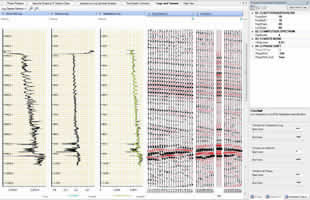Resistivity measurements rely on expanding the electrode separation in order to achieve ever deeper measurements, leading to a larger volume of the subsurface material being sampled for each successive depth level. As a result the each resistivity measurement represents the bulk resistive properties of the ground- referred to as the Apparent Resistivity. The recorded Apparent Resistivity is represented as a point measurement in the dataset. In order to interpret variations in the electrical properties, and create a ground modal, it is necessary to mathematically calculate the subsurface conditions required to produce an equivalent dataset to the one recorded by the instrument- this is called inversion.
- 3d Resistivity Inversion Software Download Last Evil Full
- 3d Resistivity Inversion Software Download Last Evil 3
- Software Download Games
RES2DINV is one of the most common inversions packages for calculating 2D Resistivity and Chargeability models. The software package is fully automated and advises the user on what modal and inversion parameters are applicable for the dataset, or how parameters should be adjusted.
A least-squares routine is used to perform the inversion and RES2DINV permits the user to adjust the style of the inversion routine as well as key parameters like the dampening factor.
3D ELECTRICAL RESISTIVITY TOMOGRAPHY INVERSION SOFTWARE Multi-Phase Technologies LLC 420 South Rock Blvd. Sparks, NV 89431 775 356 7844 www.mpt3d.com inquiries@mpt3d.com Geostudi Astier srl Via Aiaccia 16/B 57017 Stagno (LI) –Italy +39 0586 943356 www.geoastier.it info@geoastier.it. The 3D resistivity inversion model shows high resistivity ( 1000 Ω-m) in the aftershock area of the 2017 earthquake, located between two distinct low resistivity zones (C-1 and C-2) (Figs. The high Φ 2 of phase tensors also imply the C-1 and C-2 conductors as we mentioned (Fig. To ensure that the C-1 and C-2 conductors are.
RES3DINV is capable of inverting 3D apparent resistivity volumes measured using a regular grid of surface electrodes and is a powerful tool for resoling complex buried structures.
The software has a number of features for optimising the least-squares routine for faster completion on large datasets.
Features
- Finite element and Finite Difference models.
- Optimised damping factor.
- Optimised Qusi-Newton least-squares method (for large datasets).
- Borehole, floating and underwater electrode arrays are also supported.
Technical Specifications
3d Resistivity Inversion Software Download Last Evil Full
| RAM Memory: | Minimum 1Gb |
|---|---|
| Operating System (OS): | Windows XP-10 (32 & 64bit) |
| Processor: | Optimised for Multi-Core Processors |
3d Resistivity Inversion Software Download Last Evil 3
Data Sheet

- RES2DINV & RES3DINV Datasheet (PDF)
Literature
Software Download Games

- Geotomo Resistivity Notes (2015)(PDF 10MB)
Description
2D/3D-inversion software RES2DINV/RES3DINV
The RES2DINV/RES2DINV programs use the smoothness-constrained Gauss-Newton least-squares method inversion technique to produce a 2D/3D model of the subsurface from the apparent resistivity data alone. It is completely automatic and the user does not even have to supply a starting model.

This program has been optimised for the inversion of large data sets. The use of available memory is optimised so as to reduce the computer time by minimising disk swapping. On a modern microcomputer, the inversion of a single pseudosection is usually completed within seconds to minutes. Four different techniques for topographic modelling are available in this program. Together with the free 2D forward modeling program RES2DMOD, it forms a complete 2D resistivity forward modeling and inversion package.
The program will automatically choose the optimum inversion parameters for a particular data set. However, the parameters which affects the inversion process can be modified by the user. The smoothing filter can be adjusted to emphasize resistivity variations in the vertical or horizontal directions. Two different variations of the smoothness constrained least-squares method are provided; one optimised for areas where the subsurface resistivity varies in a smooth manner (such as chemical plumes), and another optimised for areas with sharp boundaries (such as massive ore bodies). A robust data inversion option is also available to reduce the effect of noisy data points. Resistivity information from borehole and other sources can also be included to constrain the inversion process.
